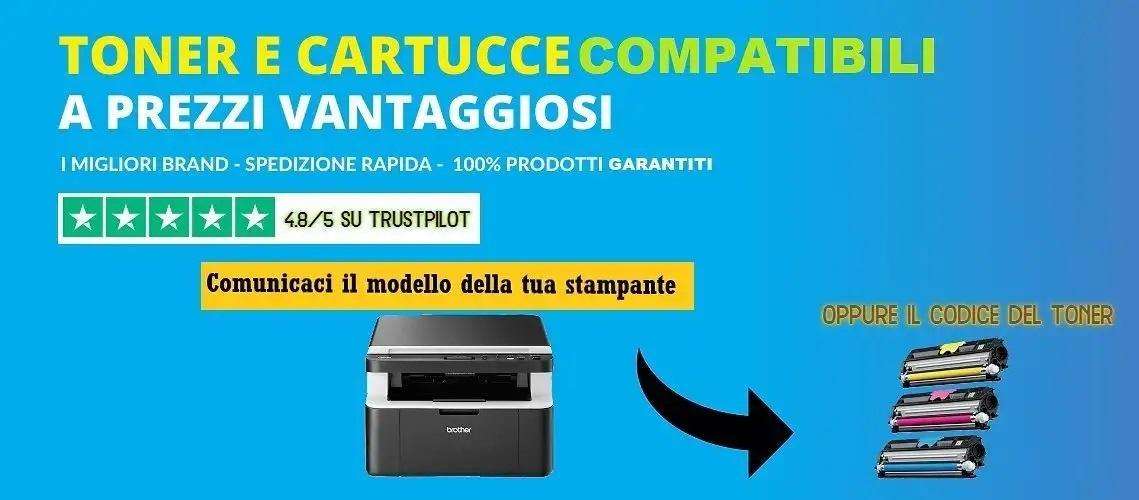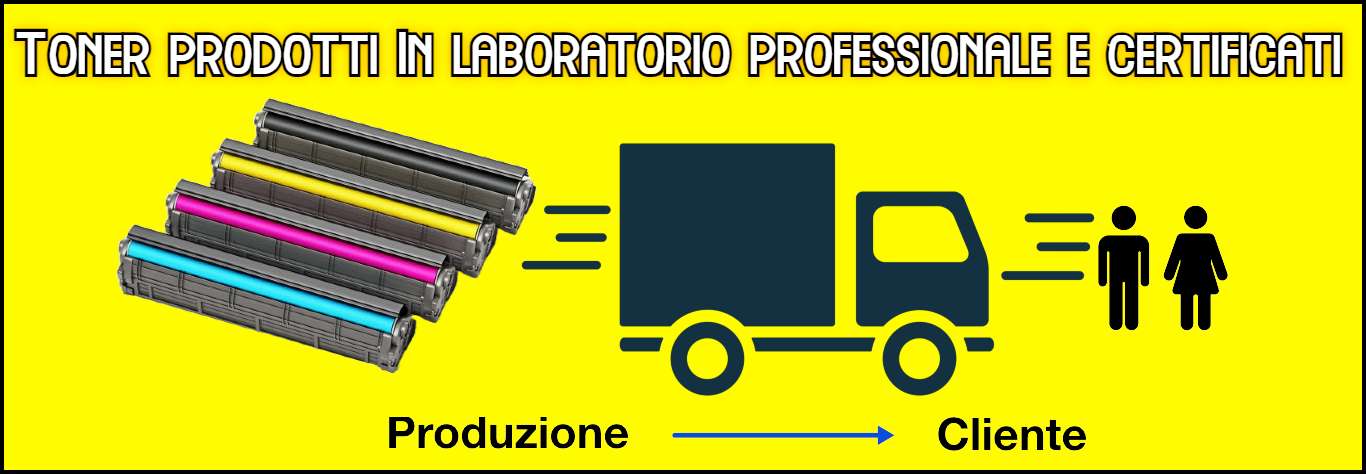| |||||||||||||||||||||||||||||||||||||||||||||||||||||||||||||||||||||||||||||||||||||||||||||||||||||||||||||||||||||||||||||||||||||||
martedì 30 aprile 2024
Suggerimenti per playlist personalizzate, scelte in base ai tuoi gusti.
sabato 27 aprile 2024
Toner compatibili: Grande risparmio rispetto gli originali - Chiedici un preventivo per i tuoi toner
|
|
giovedì 25 aprile 2024
Borracce ermetiche Neo Tritan
top di gamma da circa 600ml:
• Materiale: EASTMAN Tritan – estremamente
resistente - ermetico anti perdite
• LFGB – lo standard alimentare più elevato
con certificazioni
• Lavabile in lavastoviglie
Made in Eu
Compresa tua personalizzazione ad 1 colore
(anzichè Euro 14,90)
Offerta limitata valida per ordine o prenotazione entro il 30 Aprile 2024
>PREZZO TUTTO COMPRESO<
Impostazione grafica______ IN OMAGGIO
Impianti stampa _________ IN OMAGGIO
Spedizione in tutta Italia ___ IN OMAGGIO
CHE COS'E' IL TRITAN:
Il Tritan è un copoliestere di nuova generazione le cui principali caratteristiche:
- Resistenza agli urti
- Ottima resistenza chimica
- Trasparenza
- Resistenza ai cicli di lavaggio
- Ottima tenuta ermetica
Inviaci il Tuo logo e dati e ti prepareremo una bozza grafica, senza impegno
Clicca qui per vedere i prodotti della stessa linea/colori
Non esitare a contattarci per informazioni, ordini o preventivi per oggetti promozionali.
Cordiali saluti
Ufficio commerciale - Lisa e Nadia
commerciale@espansionegrafica.it
oppure rispondi a questa mail
Espansione Grafica (dal 1981)
tel. 0141 405744 - 0141 405777
https://espansionegrafica.it/
martedì 23 aprile 2024
Essential Guide To Safe Well Water Maintenance
If your home relies on well water, ensuring its safety and quality is your direct responsibility. Contaminated well water can harbor harmful bacteria, viruses, and chemicals that pose serious health risks. This comprehensive guide will arm you with the knowledge and best practices to maintain your well and ensure your family's drinking water is safe.
Why Well Water Maintenance Matters
- Health Protection: Well water must be free from contaminants that can cause illness, particularly for vulnerable populations like infants, the elderly, or those with compromised immune systems.
- Long-Term Well Functionality: Preventative maintenance prolongs the life of your well system, reducing costly repairs and replacements.
- Peace of Mind: Staying on top of well inspection and management allows you to trust the water you drink and use.
Key Steps for Maintaining Your Well
1. Well Construction and Location
- Professional Installation: Hire licensed well drillers to ensure proper construction, preventing surface water contamination.
- Safe Site: The well should be situated away from potential contamination sources like livestock areas, septic systems, or chemical storage.
- Uphill Placement: Wells installed on a slope should be uphill from contamination sources.
2. Regular Well Inspections
- Annual Checkups: Schedule yearly inspections with a qualified well contractor to assess your system's overall condition.
- Look for Changes: Monitor your well for any signs of damage, including cracks in the casing, a damaged or missing well cap, or pooling water near the wellhead.
- Professional Assistance: If you detect any issues, contact a well professional immediately for repair.
3. Water Testing
- Annual Testing (Minimum): Test your water for bacteria and nitrates at least once a year with a certified lab.
- Contamination Suspicions: Immediately test your water if you notice changes in taste, odor, or color.
- Nearby Activities: Test more frequently if activities near your well increase the risk of contamination (e.g., agriculture, new construction).
4. Maintaining the Wellhead
- Secure and Sanitary Well Cap: Ensure your well cap is tightly sealed and free of cracks. It should have a vermin-proof screen over the vent.
- Ground Slope: The ground around the well should slope away to prevent water pooling.
- Keep it Clear: Maintain a clutter-free area around the well to limit pest habitats and simplify inspection.
5. Protecting Your Well from Contamination
- Safe Distances: Keep known contamination sources (septic systems, livestock, fertilizer storage) well away from your well, following your local regulations for distances.
- Mindful Chemical Use: Avoid using pesticides, herbicides, or fertilizers near the well.
- Proper Waste Disposal: Never dispose of hazardous, chemical, or medical waste near your well.
Additional Tips
- Well Records: Keep detailed records of well construction, testing results, and any repairs or maintenance.
- Treatment Systems: If water tests indicate contamination, consider installing a suitable water treatment system.
- Unused Wells: Decommission abandoned wells according to professional guidelines to protect groundwater.
The Importance of Professional Well Contractors
Always seek the expertise of licensed well contractors and pump installers for construction, repairs, and in-depth inspections. They possess the knowledge and tools to keep your well system operating effectively and safely.
By diligently following these guidelines, you'll significantly safeguard your family's health and ensure the longevity of your well water supply.
--You received this message because you are subscribed to the Google Groups "Broadcaster" group.
To unsubscribe from this group and stop receiving emails from it, send an email to broadcaster-news+unsubscribe@googlegroups.com.
To view this discussion on the web visit https://groups.google.com/d/msgid/broadcaster-news/85802019-0992-4bdb-b3f6-3fd8632554f1n%40googlegroups.com.
lunedì 22 aprile 2024
I brani più emblematici dei tuoi artisti preferiti.
| ||||||||||||||||||||||||||||||||||||||||||||||||||||||||||||||||||||||||||||||||||||||||||||||||||
mercoledì 17 aprile 2024
How To Get Rid of iron In Well Water
If you're struggling with rusty-looking stains on your sinks, a metallic taste in your water, or concerns about the safety of your well, the culprit is likely excess iron. Several proven methods exist to remove iron from your well water, including filtration, aeration, and oxidation. Understanding the causes of iron in your well and the various removal solutions empowers you to make the best decision for your home.
Iron naturally occurs in soil and rocks. As rainwater percolates through the ground, it can dissolve iron minerals, carrying them into your well water. This issue is particularly common in areas with naturally iron-rich geology or if you have older well components that may be corroding.
How Does Iron Get Into My Well Water?
The primary way iron enters well water is through natural processes. Groundwater seeps through iron-rich soil and rock formations, dissolving iron minerals along the way. Additionally, older well casings, pipes, or pumps made of iron-based materials can gradually rust, contributing to elevated iron levels in your well water.
What Problems Does Iron in Well Water Cause?
- Staining: Iron in well water is notorious for leaving unsightly reddish-brown stains on your plumbing fixtures, sinks, tubs, laundry, and even dishes.
- Metallic Taste and Odor: You may notice an unpleasant metallic taste or even a rusty odor in your drinking water and in beverages made with it.
- Appliance Damage: Over time, iron buildup can clog pipes and reduce the lifespan of water heaters, dishwashers, and other appliances.
- Potential Health Concerns: While iron is an essential nutrient, the EPA notes that excessive long-term consumption could pose health risks, primarily for individuals with certain medical conditions.
- Iron Bacteria: Iron in well water can promote the growth of iron bacteria, leading to slimy buildups and a worsening of taste, odor, and clogging issues.
How Do I Test for Iron in My Well Water?
- DIY Kits: Simple home test kits provide a basic indication of iron presence, but they may not be accurate enough for precise decision-making.
- Professional Lab Testing: For comprehensive results and critical information about your exact iron levels and other water quality parameters, send a water sample to a certified lab. Local health departments or water treatment companies can often help you find testing services.
What Are the Best Ways to Remove Iron from Well Water?
-
Filtration Systems
- Sediment Filters: These basic filters can remove some larger iron particles, but may be insufficient for higher iron levels.
- Iron-Specific Filters: Specialized filters with various media types trap and remove iron effectively, making them a popular treatment solution.
- Water Softeners: Traditional water softeners can remove small amounts of iron through ion exchange, but are more focused on addressing water hardness.
- Maintenance: Regardless of the filter type, regular replacement according to the manufacturer's instructions and monitoring your water quality with testing will ensure continued effectiveness.
-
Aeration
- Process: Aeration injects air into the water, oxidizing soluble ferrous iron into insoluble ferric iron, making it filterable.
- Best for: Aeration is ideal for high iron levels and is often combined with filtration for optimal results.
-
Chemical Oxidation (Chlorination)
- Process: Chlorine injection oxidizes iron and disinfects the water. Filtration then removes the oxidized particles.
- Considerations: Chlorine can affect water taste, requiring additional filtration steps, and needs careful handling due to its potential hazards.
-
Other Methods
- Reverse Osmosis: This removes a wide range of contaminants, including iron, but may be less cost-effective for targeting iron specifically.
- Distillation: Similar to reverse osmosis, it's very effective but may not be practical as a primary solution for whole-house iron removal.
How Much Does Iron Removal Cost?
The cost to remove iron varies greatly depending on:
- Iron Level: Higher iron concentrations may require more complex treatment systems.
- Water Usage: The size of your household and water demand impact system capacity needs
- Chosen Method: Simple filters are less expensive, while aeration or chlorination systems have higher upfront and potential maintenance costs.
- DIY vs. Professional: Professional installation adds expense but is often recommended for complex setups.
Can I Remove Iron from My Well Water Myself?
The possibility of DIY installation depends on your skill level and the chosen method. Installing basic sediment filters or under-sink iron filters can be within a homeowner's capability. For whole-house systems, aeration, or chlorination, professional consultation and installation are usually the safest and most reliable route.
Resources:
- https://www.youtube.com/watch?v=_WoCQaXqQV4
- https://original.newsbreak.com/@reynold-aquino-1600118/3405129383798-how-to-get-rid-of-iron-in-well-water
- https://medium.com/@reynoldaquino/how-to-get-rid-of-iron-in-well-water-e01acbb39f9d
You received this message because you are subscribed to the Google Groups "Broadcaster" group.
To unsubscribe from this group and stop receiving emails from it, send an email to broadcaster-news+unsubscribe@googlegroups.com.
To view this discussion on the web visit https://groups.google.com/d/msgid/broadcaster-news/0ee47ecb-31f3-490b-9ba1-7e2b3732fdd6n%40googlegroups.com.
sabato 13 aprile 2024
Playlist fatte apposta per te.
| |||||||||||||||||||||||||||||||||||||||||||||||||||||||||||||||||||||||||||||||||||||||||||||||||||||||||||||||||||||||||||||||||||||||||||||||||||||






